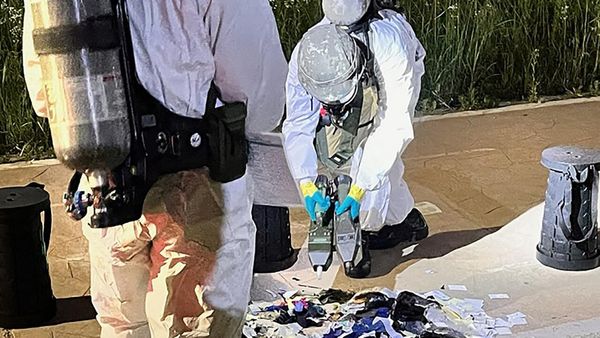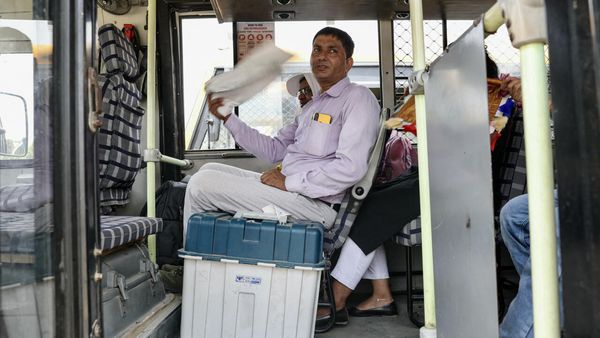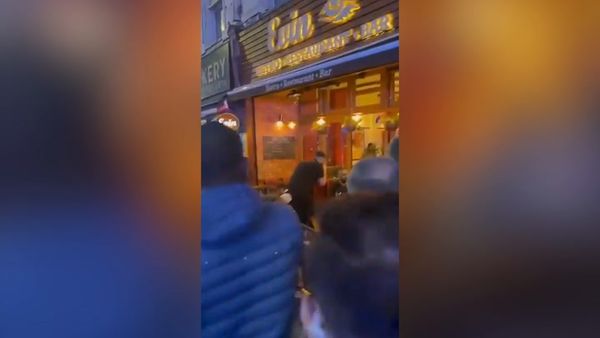
Castle Combe celebrates its milestone 500th car race meeting on Easter Monday, with 500cc Formula 3 cars rolling back the years to the Wiltshire circuit’s inaugural event, run behind closed gates by the Bristol Motor Cycle & Light Car Club on 8 July 1950.
The 500cc initiative, which blossomed rapidly from seeds sown by motorsport-hungry Bristol enthusiasts in 1946, was adopted as Formula 3 in 1950 and a key to Second World War aerodrome Castle Combe’s early success as a race track. Its opening meeting featured pre-war Morgan ace Clive Lones win the programme-closing 500cc event in his bright red Tiger Kitten II. Evolved from the first production Iota P1, which the class pioneer had debuted in 1949, Lones’s intriguing confection was powered by a JAP engine manufactured by JA Prestwich Industries in North London. The long-established and prolific marque’s accessible products played a pivotal role in the category’s growth.
Nonetheless, competitors enjoyed free rein to choose their engines, most of single-cylinder configuration sourced from motorcycles. While the inexpensive and readily available JAP overhead valve designs opened the doors to racing to many, more powerful and reliable overhead cam Manx Nortons – tuned by experts such as Francis Beart and Robin Jackson, Steve Lancefield and Ray Petty – soon outgunned them.
Even so, some drivers/engineers preferred to plough their own furrow. Vincent HRD units and Triumph twins were not uncommon, while others opted for BSA and Rudge motivation. Continental marques such as BMW and Gilera were also represented as the word spread.
With the Royal Automobile Club satisfied of the wartime aerodrome perimeter track’s suitability in practical terms at the trial event – a mix of car and motorcycle races – the first public meeting at Castle Combe took place three months later, on 7 October. An estimated 12,000 spectators witnessed Ronald ‘Curly’ Dryden (Cooper Mk2) and Stirling Moss (Cooper Mk4) win the 500cc F3 qualifying heats, the latter after a battle with Peter Collins in a sister car. Collins narrowly won the final from Dryden. Moss, slow away, was soon flying but was thwarted by engine issues.

From there, the list of Combe 500cc winners reads like a Who’s Who? of the sport’s rising stars and Half-Litre Club’s most famous alumni, which included older drivers such as Dryden, Don Parker, Jim Russell and Les Leston, who started competing late due to the war. The diminutive Parker – who did not make his competition debut until his early forties – won more races than anybody else at the Wiltshire venue (four heats and five finals) between 1951 and 1955, to F1-bound Moss’s six.
Tragically, wartime RAF pilot Dryden lost his life, aged 42, when his JBS-Norton turned over at Combe’s Camp Corner in October 1951. Moss was more fortunate when he was pitched out of his Cooper 500 – fitted with a 1000cc JAP V-twin engine for an F2 race – at Quarry two years later!
The little machines rebooted single-seater sport and founded the production racing car industry that Britain led
While the sleek Cooper cars built by Charles Cooper and his son John in Surbiton, initially around Fiat Topolino suspension units, were numerically dominant in period – production ran into the hundreds – rival marques also tasted success at Combe. JBS (creation of Rye House speedway star Alf Bottoms), Kieft (founded by Welshman Cyril Kieft in Bridgend), Revis (built by former Spitfire pilot Reg Bicknell in Southampton) and Ray Martin’s eponymous cars were also winners. After some crafty gamesmanship by company director Moss, Christchurch garagiste Andre Loens and Jack Westcott chased him home for a Kieft 1-2-3 in April 1952.
Other winners included Ivor ‘the Driver’ Bueb, who won the Le Mans 24 Hours race twice in Ecurie Ecosse Jaguar D-types, shared with future F1 champion Mike Hawthorn (1955) and Ron Flockhart (1957). Also enjoying Combe 500cc F3 success were Welsh garage owner David Boshier-Jones – who claimed three successive British Hillclimb championships in 1958-60 driving a 1000cc Cooper-JAP V-twin – and long-time British Racing & Sports Car Club clerk of the course Don Truman, who had abandoned his Marwyn-based Bardon Turner for a proprietary Cooper Mk6.
After spinning at Camp in the opening 25-lap race of a glorious afternoon, handing victory to works Cooper Car Company team-mate Bueb, the honour of winning the last 500cc race at Combe fell to future racing school guru Russell in his Cooper-Norton Mk9 on 1 October 1955.

Using Lancefield-tuned Manx Norton engines, Russell won 11 of the 27 frontline races that year to deservedly be crowned Autosport British F3 champion, but the tenacious Bueb kept the title race alive until October, claiming six victories across a consistent season.
Although F3 was losing popularity to small capacity sportscar racers by the latter part of the 1950s, and Formula Junior would supplant it, Castle Combe played no further part in the 500cc category after the momentous but loss-making international event that closed its 1955 season.
In fact, such was the call for comprehensive safety improvements across motor racing in the wake of the appalling accident at Le Mans in June that local promoter Bristol MC & LCC was unable to countenance the cost of the requisite upgrades. Regretfully, Castle Combe was closed and did not reopen for car racing until 1962, after the BRSCC dug deep to make the investment in earth banks.
By then, the charismatic 500cc era, and the waft of its aromatic race fuel, was over. Effectively the F2 and F3 of its time, Formula Junior created a more cohesive and relevant training ground for aspiring grand prix drivers.
But F3 was reinvigorated in 1964 with the adoption of 1000cc ‘screamer’ engine rules that prevailed until 1970. That evolution celebrates its 60th anniversary this year as Historic 1-Litre F3, and will be showcased at the Castle Combe Autumn Classic in September. Meanwhile, the 500 Owners’ Association, founded in 1968, strives to preserve the history of its predecessor, promoting circuit racing, hillclimbs and sprints for the little machines that rebooted single-seater sport and founded the production racing car industry in which Britain led the world after the Second World War.
Some of the notable cars set to race at Combe this year

Among a bumper grid of 500cc Formula 3 cars entered for Easter Monday’s 2024 season-opener at Castle Combe, the Cooper-Norton Mk8 (chassis Mk8/19/54) of Simon Hewes is of special interest. Recorded as Stuart Lewis-Evans’s works car in 1954, it debuted at Kirkistown.
A fortnight later, 70 years ago this weekend, the combo finished third in the final at Combe, behind Reg Bicknell (Revis) and Ivor Bueb in his works Cooper Mk8. Wins at Brough, Brands Hatch, Orleans (France), Teramo and Senigallia (Italy) followed. In 1955, entered by Brooklands tuning guru Robin Jackson, Lewis-Evans was victorious at Charterhall, Brands, Orleans, Oulton Park and Cosenza (Italy).
After Lewis-Evans graduated to F1 in 1957, his Kent garage owner father Lewis – known to the fraternity as ‘Pop’ – raced the Cooper. It was subsequently sold to Germany, where 18-year-old Kurt Ahrens Jr, inspired by his speedway racer father, won five times in 1958 en route to a fine Formula Junior and F2 career.
Also out at Combe is the unique Jason – reflecting its construction in July, August, September, October and November of 1952 – the creation of Midlander Godfrey Messervy. Then in his mid-twenties, the future chairman of Lucas CAV industries raced it with a fuel-injected Triumph twin engine. Serial 500 restorer Andy Raynor is the proud new owner of this early P1 class contender, JAP-powered since German Heiner Reinhart recommissioned it in the 1980s.
Another interesting debutant repatriated to its birthplace will be the 1948 Cooper Mk2 of James Wilson, who completes a three-strong team alongside aero engineer father Chris and brother Alex, winner here in 2022. Found derelict and incomplete via the legendary Kenny Smith in New Zealand in 2019, it has been subjected to a ground-up restoration, finished with days to spare.






